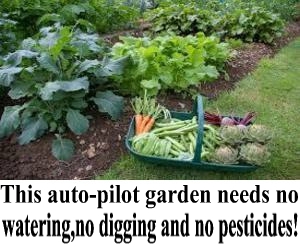The warm, sunny days are upon us. While we all love to sip on cold herbal tea that’s brewed in the sunshine all day, there are a few vital tasks that homesteaders should get done this summer before the weather turns.
Where I live, we get three months of summer weather. June, July, and August. A late freeze last year around Father’s Day destroyed everything in our garden, but this year, we prepared by saving up money and constructing a greenhouse. This will expand our growing season too.

If you live in a cooler climate, I cannot stress enough how much a greenhouse is necessary. Because we were caught off guard last year, this year, we’ve figured out what we need to do, and how to prepare well in advance for the cooler weather this fall.
Sometimes it’s easy to feel overwhelmed, but just take it one step at a time. If you know what needs to be done, you’ll be sure to complete it. Most of these tasks aren’t difficult ones for me, because I love doing them. But if you don’t like it, it can be psychologically draining.
8 Homestead Chores To Do in Early Summer
- Maintain your Greenhouse – make sure plants are thriving and they aren’t getting too hot. Keep your vegetables and herbs free of weeds. I also weed around the pollinator flowers so they won’t be snuffed out too. This is a daily task of checking your plants to make sure they are thriving. If you find pests, it’s best to figure out how to deal with them sooner, rather than later when it’s time to harvest.
- Clean Animals Stalls/Pens/Houses – we clean out our ducks’ house once a week, but at the beginning of summer, we completely start fresh with clean new straw. The used stuff goes right into the compost bin. We also make sure to completely clean out the duck house before it starts to freeze too because once that happens, all we are doing is laying fresh straw over frozen duck poop. If you need to paint or do any maintenance now is the time to get that done. We check for holes in the duck house where predators can get in, and just make sure they are safe overnight.
- Buy and Prepare any Trees or Plants for Planting – This one is a big one for us. I love trees. Fruit trees, nut trees, bushes, evergreens, aspens, you name it, I probably want one or have one. We buy several every year but made a sad mistake last year. We bought fruit trees that were just too young to survive winter here (in zone 4). We lost 3 of the 4. This year, we made a plan. We got three new trees to replace those, and plan to make sure we add some straw to insulate the roots for winter when we plant them. We also got older trees that should fare better when the temperatures dip down. I was also able to find a cold hardy fig, rose of Sharon bush, and American hazelnut. These I simply repotted and will grow indoors for a full year until they can be planted next summer. I wish I would have done this last year, but I didn’t think about it. These plants will be in our home now too, offering their beauty and natural energy for a year.
- Check Animals for Health Problems – We only have ducks, but we have checked each duck thoroughly for bumblefoot, and treated two of our girls for it. If you have other animals, just check them to make sure they are healthy going into the cooler months. We will be checking the ducks again before fall. If you notice a problem, get the help of a veterinarian before winter makes that task a difficult one.
- Make Sure All Living Things Are Watered – Make sure you provide adequate water for both plants and animals, both indoors and out. We give the ducks, dogs, and cats fresh water daily. The pool the ducks swim in is changed once a week. Even in the winter, we make sure the ducks have non-frozen standing water to play in a clean their beaks and eyes off in.
- Canning Food – when it gets too hot to work outside, use the time to can indoors. This is important if your family depends on the food that you can that year. Every year, we can more food than we did the year before. It is very hard work, and there’s a learning curve, but so worth it. I encourage everyone to grow any kind of garden they can and preserve the food. For us, it’s possible to get 3-4 feet of snow in a two-day storm. When that happens, the last thing I want to do is go to the grocery store. Being able to grow and store your own food means you’ll save some money and become more self-reliant. Both great things!
- Start your Fall Garden Seeds – Once our starts get put in the ground in the greenhouse, I plant our fall seeds. We can always use more lettuce, and I have herbs growing indoors year-round. If you plant herbs outdoors, I suggest perennials. I don’t usually use annuals outside at all just because the time we get those plants is minimal, and it seems wasteful. Echinacea, peppermint, spearmint, lemon balm, and lavender are all great options. I also have thyme, oregano, rosemary, chamomile, basil, and parsley at my disposal indoors. If you are low on space, consider a hanging herb garden. There are lots of ideas out there, just find one that works for the space you’ve got! I also make sure I get my garlic planted toward the fall when we put our starts out in the greenhouse.
- Get Your Firewood Ready – If you have a wood-burning stove, and use wood as your main source of heat like we do, you’ll need firewood. Last winter we burned 8 cords but stored 10. We have 2 cords left, however, unfortunately, my husband hurt his wrist falling on ice last winter. He may require surgery, and he will be unable to cut wood this summer, especially in the amount we will be needing. This year, we will plan ahead a buy wood from someone local to our community.
These are the 8 things that are very important to complete on your homestead this summer. Some are daily, some can be done only once or a few times, but all are necessary. Homesteading is hard work, but trust me, it’s worth it!

source : Sara Tipton



